When Hams consider handheld transceivers (HTs), they usually think about short-distance communication. The first type of communication is simplex (direct communication between two radios) that you might use to keep in contact with your friends at a Hamfest. The second type is a repeater-aided contact that might stretch across town or multiple counties.
Very early in the use of HTs, Hams realized that adding a repeater into the mix could allow a much greater range of contacts. But as we often realize, HT signals might not be strong enough to reach the repeater if we are too far away, inside a car or building, or behind a hill. These can all be frustrating situations. This article will provide ideas on how to extend the reach of your HT. In Amateur Radio, the abbreviation “DX” refers to a long-distance signal. Many times it is also used to mean stations outside your own country. We don’t know for sure, but I’m guessing that as soon as the first Hams made a two-way contact their next thought was, “I wonder if I could make a contact even farther away?” Thus, the idea of DXing was born!
HTs have a number of inherent issues that limit their range.
- They are typically on VHF and UHF bands (2 meters, 440, 220 and 1.2 GHz). VHF and UHF are mainly propagation-limited to line-of-sight (60 miles maximum) or shorter distances even under the best conditions.
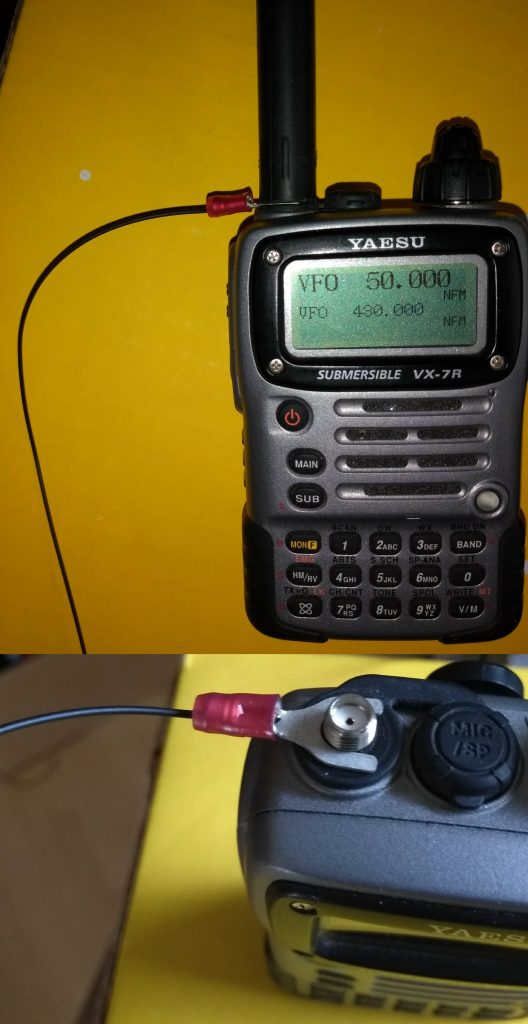
- All-or-nothing FM operation, which is not great for picking up weak signals, is the HT’s typical mode of operation.
- HTs are low-power devices using 5 watts or less of output power.
- The antennas that typically ship with HTs (often called “rubber ducks”) are compromise designs meant to limit their size and provide protection from breakage.
- HTs are meant to be portable and are often not provided with adequate ground planes for enhancing antenna function.
All of these factors can contribute to limiting your activity to shorter-range contacts. But fear not! There are fairly easy and inexpensive ways to increase your HT’s effective communication distance. I will group them into three categories: moderate increases in coverage distances, major increases, and outright DX distances. All of these ideas can help with both simplex (direct) and/or repeater-aided contacts.
Moderate Coverage Improvement Ideas
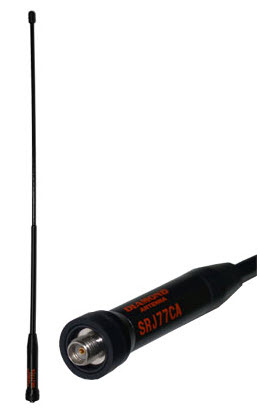
The first way to increase effective communication distance with your handheld is completely free—read the user manual to make sure you are using the desired power range and other features. The second method requires only a short length of wire known as a tiger tail. When attached to the body or ground point of the radio, it acts as a ground radial to improve the HT’s antenna performance. Often you can simply strip the insulation from the first half inch of the wire and wrap it around the base of the antenna connector before attaching your antenna. You might want to make it more durable by using a ring or “U” terminated crimp-on wire connector that fits over the antenna mounting point (see picture). Either way, the important part is to make sure the wire makes good electrical contact with the radio’s antenna ground. The length of wire is determined by the band(s) of the radio used—approximately 19.25″ on 2 meters, 11.5″ for 220, and 6.5″ for 440.
You may also want to try an aftermarket HT antenna like those available at DX Engineering. Most but not all are usually longer than stock HT rubber ducks and some collapse for more compact transportation and then extend when in use. Even a short aftermarket HT antenna can perform better when it is replacing an internally broken or poorly built original equipment antenna. When selecting your replacement antenna, make sure it has the correct connector that matches your HT. The most common are male and female BNC; SMA (SubMiniature version A) types: SMA-Male, SMA-Female, Reverse SMA-Male and Reverse SMA-Female; and proprietary connectors.
Major Coverage Improvement Ideas
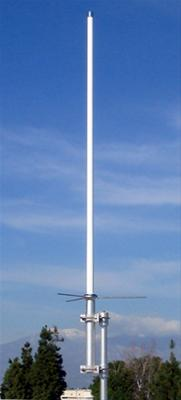
Let’s first look at how to significantly increase effective communication distance for an HT in a vehicle. The addition of a mobile antenna on the outside of the vehicle can make all the difference between hitting the repeater and not making it. There is a wide variety of mobile antenna sizes and configurations, but for the purpose of this article we will separate them into two groups: fixed attachments and temporary attachments (often referred to as mag mounts). The use of a temporary mag mount allows easy movement of the antenna between different vehicles or even for use on rental cars. Fixed mounts usually require a little more time and effort to install but make for a more permanent and often safer, more effective, and efficient installation. DX Engineering has an extensive offering of both types of mounting systems plus a wide variety of antenna sizes and gain ratings to complete your installation.
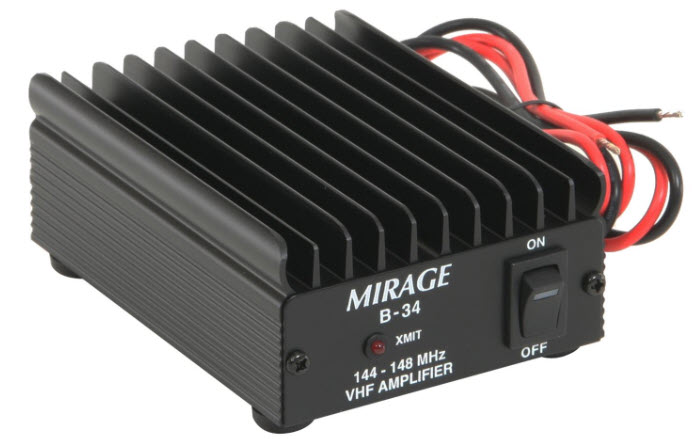
Another way to increase effective communication distance is a home roof installed VHF/UHF base vertical antenna. These omni-directional antennas provide the gain needed to bring up even distant repeaters without the need for rotators or towers. Adding an RF amplifier can make your HT into a radio that can mimic many VHF/UHF mobile radios in range. Modern solid-state VHF/UHF amplifiers, often referred to as “bricks,” are simple and silent to operate. With 2 to 5 watts input from your HT, these amplifiers can output 35 to 160 watts depending on the model selected. You will need to decide between an FM-only amp that will work with your HT or an all-mode amp that will also work on SSB and CW if you want to use them with other radios. The Mirage B-34 VHF Amplifier is an example of an FM-only HT solid-state amp that covers 144-148 MHz with 2 watts in/35 watts out. This amplifier could be used at home or in your vehicle.
DX Coverage Improvement Ideas
These improvements allow you to work beyond your state borders and possibly outside your country (depending on where you live or which you choose). Directional beams on VHF/UHF are often used with SSB and CW modes, but they can also be used with FM radios like your HT if you need maximum amounts of gain. The difference is you will probably want to orient your beam in a vertical configuration to maintain the convention of vertical FM polarization. If you choose a beam, you will either need to have it pointing in a specific direction where you want coverage or provide a rotator to allow multiple directions of gain. If you plan to do both FM and SSB/CW, you can purchase VHF/UHF beams with crossed elements that can support both vertical and horizontal polarization. Beams are available as single band, dual band or multiband. Small beams can even be used in the field as handhelds to increase gain. Beams have an advantage over amplifiers in that they provide gain not only for your transmitted signal but also for receiving. The MFJ 1760 VHF/UHF Yagi Antenna is an example of a small, light, inexpensive beam that could easily be mounted on a mast or used as a handheld beam to improve coverage in the field or even operate FM satellites (see below).
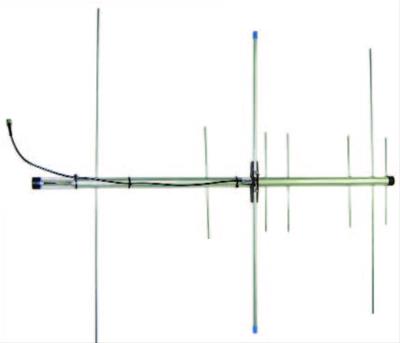
Our next idea can definitely give you maximum DX with your simple HT—FM satellites. FM satellites are basically like FM repeaters with maximum heights as they fly over in their low-Earth orbits (LEO). These small satellites are easier for beginners to use than their SSB/CW counterparts and demand less of an investment in equipment. Basically you need a dual-band HT (VHF/UHF) that supports split operation (receive on one band and keying transmitter on the other), or two separate HTs—one on VHF and the other on UHF. Next, you need a small beam antenna that supports both VHF and UHF or two separate antennas. If you are interested in getting on FM satellites, read this short guide I wrote on how to begin.
Our final method is use of a Digital Mode HT. There are three major varieties of Digital Mode HTs in use by Hams: DMR stands for Digital Mobile Radio, which uses the Motorola TRBO protocol for communications; D-STAR, which uses an ICOM protocol; and C4FM/WIRES-X, which uses a Yaesu protocol. These modes are one of the new hot areas of Amateur Radio growth. These protocols convert your voice into digital form and send it out via RF (with other bits of information included), allowing you to communicate with other digital radios and digital radio repeaters, which are networked together around the world via the Internet. No matter which protocol you choose, DX Engineering can help you get the Digital Mode equipment you need and provide the knowledge to make it all work!


Pingback: DXing with a Handheld: What You Need to Know - Ham Radio News